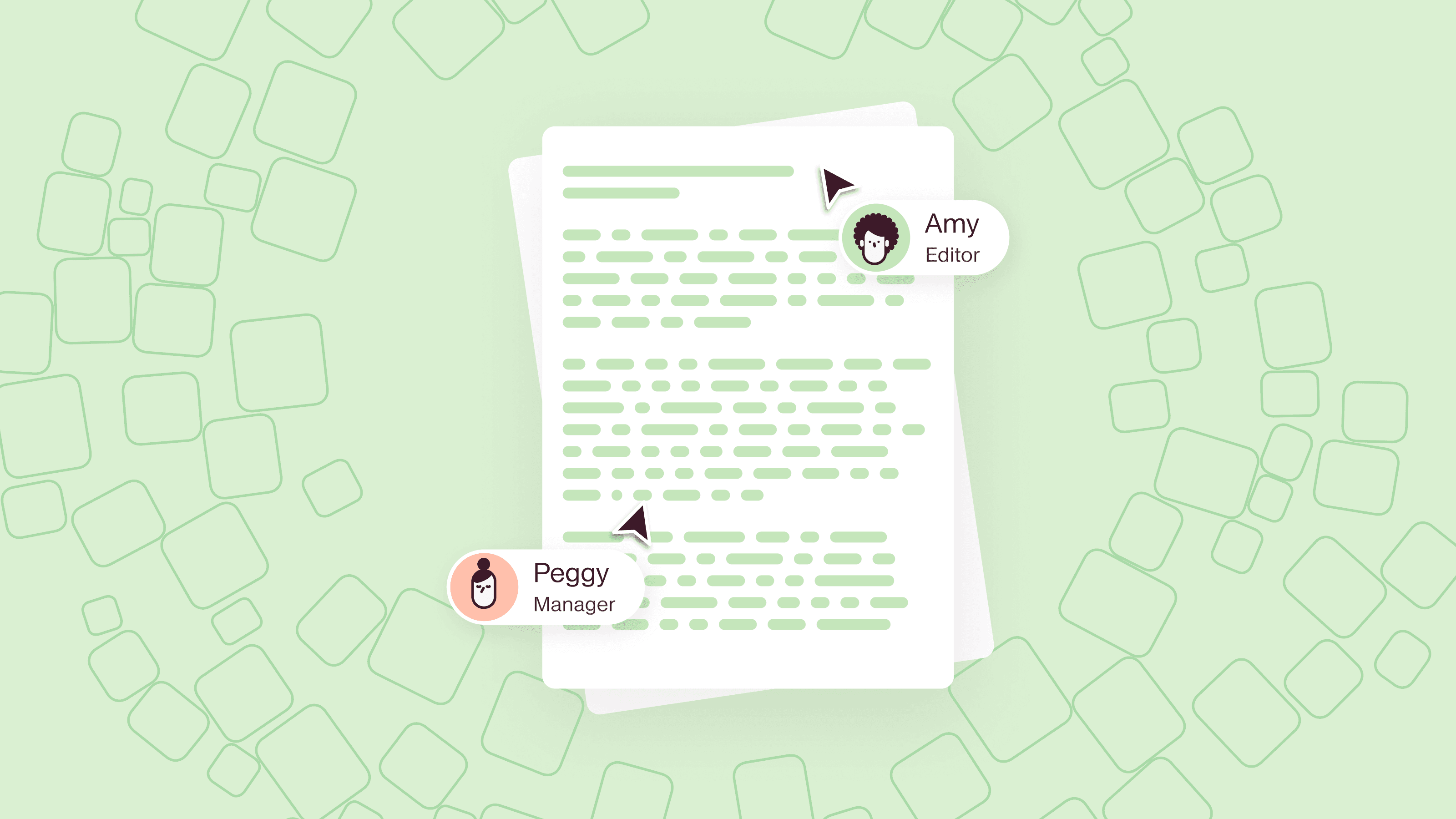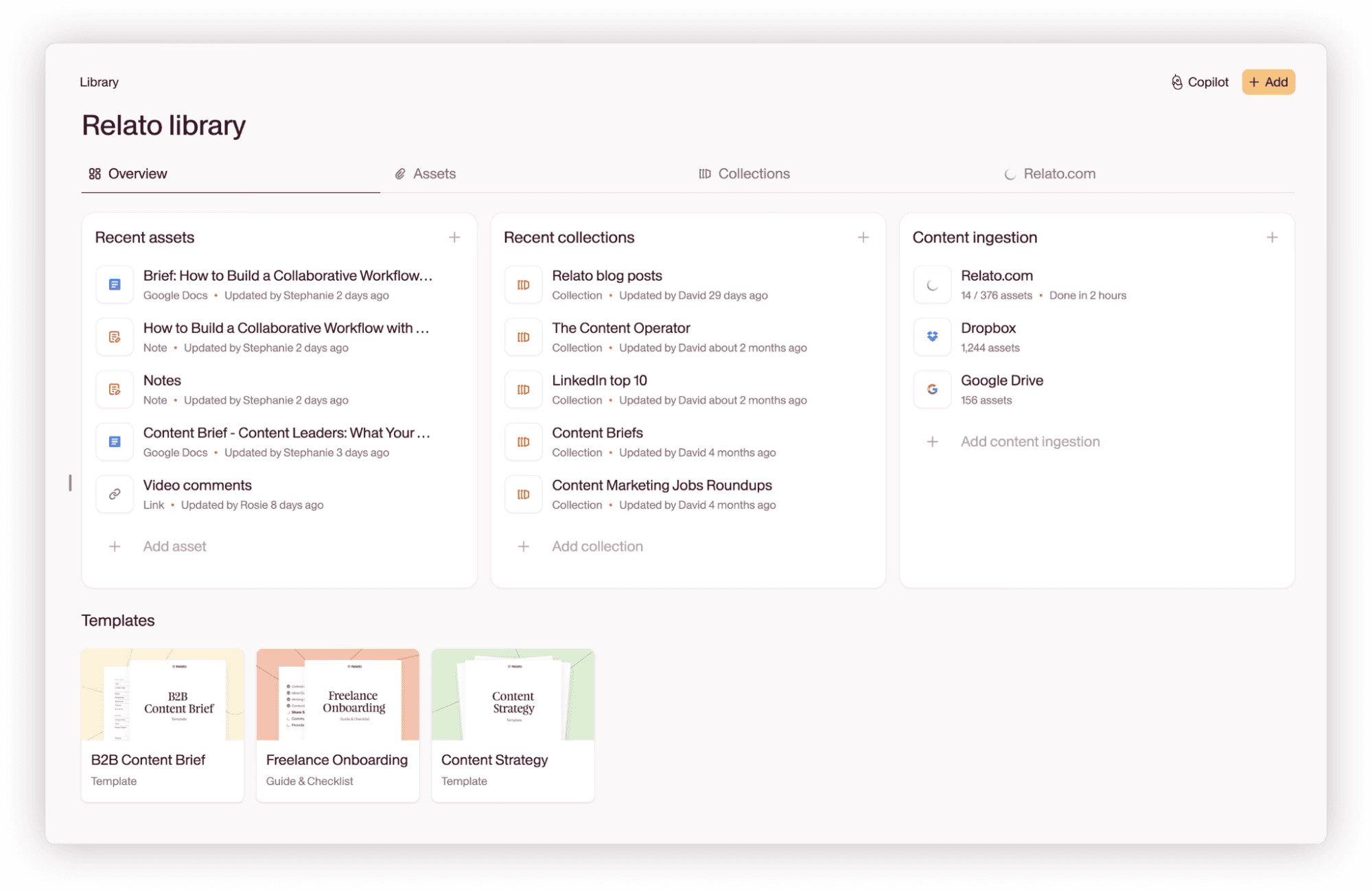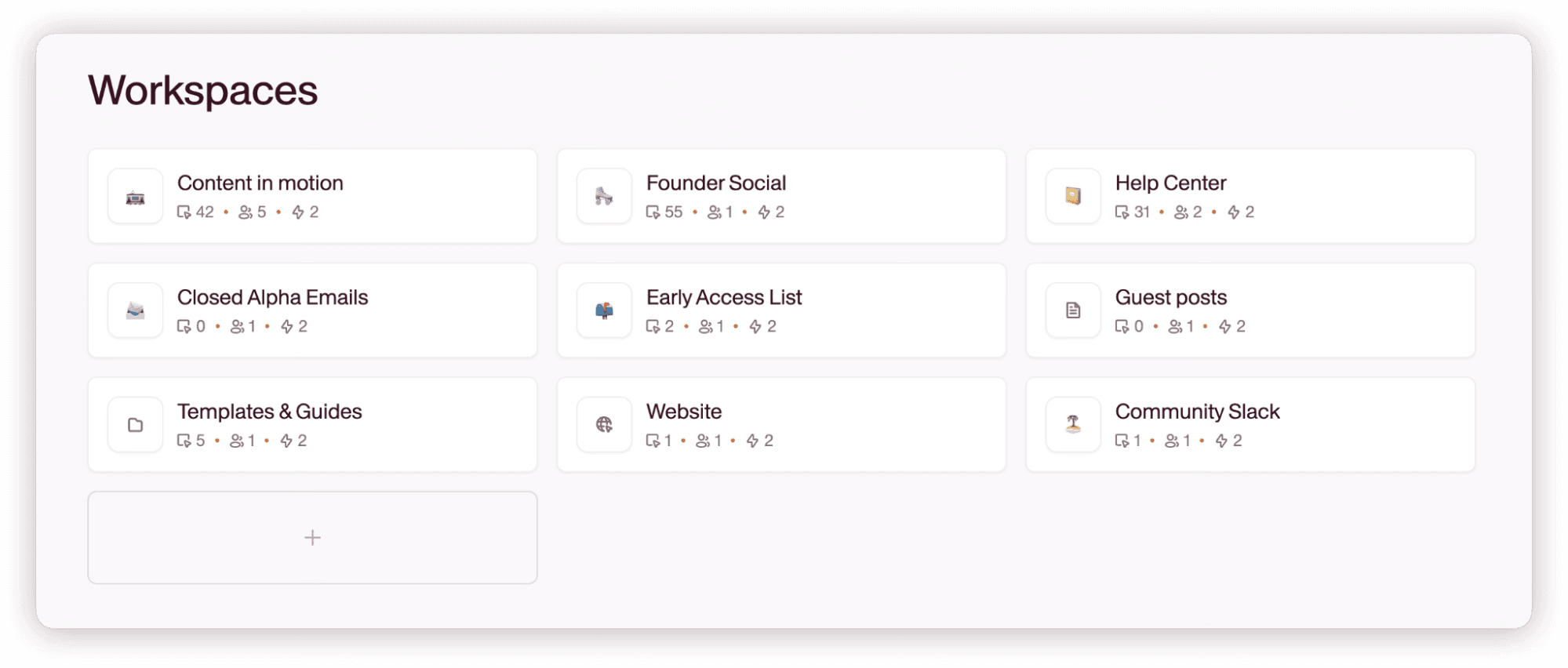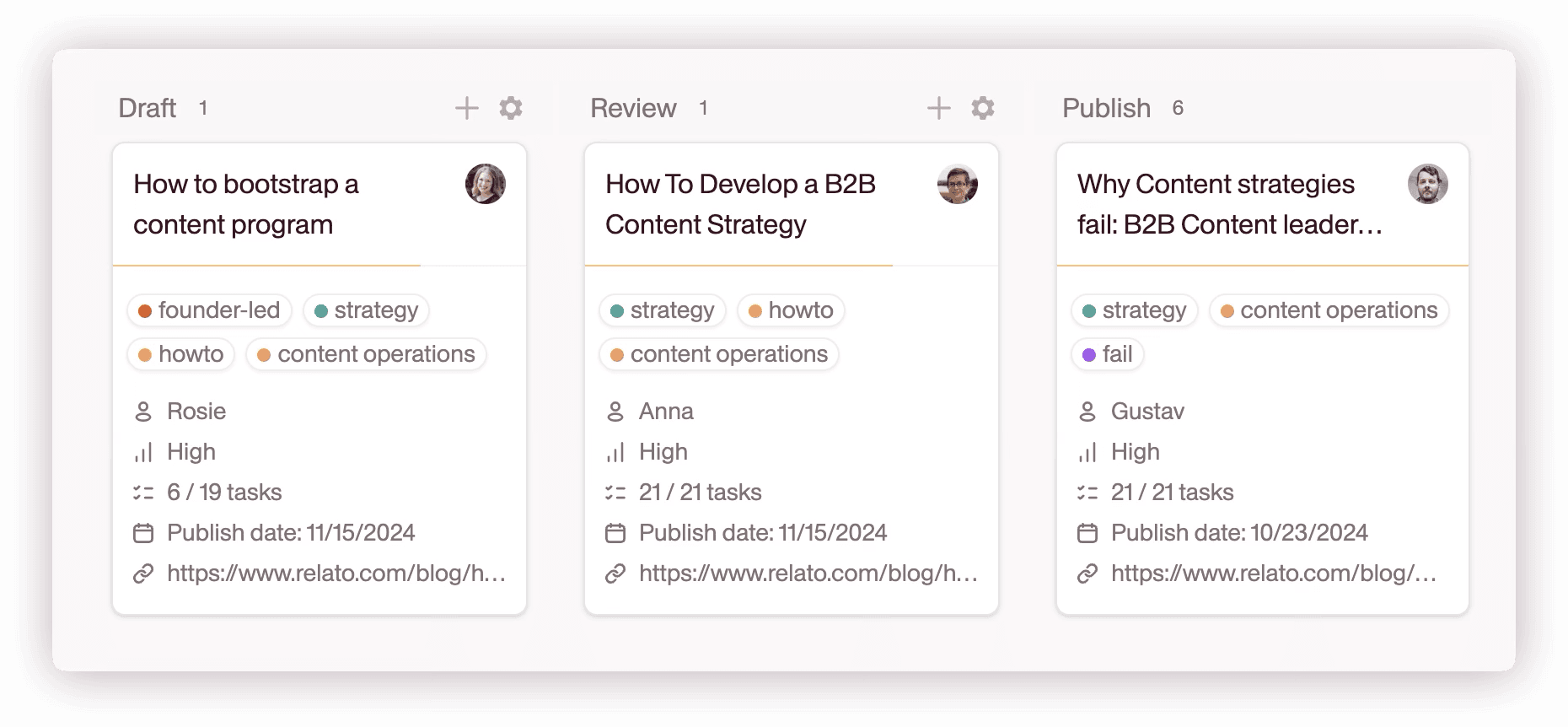Creating a ‘Single Source of Truth’ in Content Marketing
Content clutter derails teams when assets and feedback scatter across tools. If your team spends more time hunting files than crafting content, you need a better system. This guide shows you how to build one.

Content marketing feels scrambled — because it kind of is. Deadlines slip, feedback disappears into inbox voids, and the tools multiply like tabs on a Monday morning. The issue isn’t your team. It’s the Frankenstack of apps you’ve been duct-taping together.
You know the drill. A writer pings you on Slack asking for the brief. You dig through Drive, realize it’s on someone’s desktop, and now you’re three platforms deep with nothing to show for it.
This setup wasn’t built for modern teams. It slows things down and makes collaboration harder than it needs to be.
But there’s a better way.
A single source of truth brings clarity to the mess. When your strategy, resources, and processes live in one place, your team can stop chasing files and start publishing with purpose.
In this article, we’ll show you what a source of truth actually looks like, why disjointed systems stall momentum, and how to build a setup that works for real-world teams.
What’s a single source of truth, in content terms?
A single source of truth is a centralized hub where your entire content marketing ecosystem lives. It’s where your strategy, tasks, assets, and input all come together, so your team works from the same playbook.
The concept goes deeper than a simple file storage system or project management tool. Sales teams rely on CRMs to track deals, finance uses accounting software to manage transactions, and HR runs payroll through HRIS platforms. Each team gets one platform that powers their work.
Content teams deserve the same.
A single source of truth:
- Stores strategy docs, style guides, and brand files
- Tracks progress from kickoff to publish
- Keeps edits and notes in one thread
- Handles version control and permissions automatically
- Shows real-time timelines and status
Imagine managing content for a B2B company. You start your day bouncing between Slack, Asana, Drive, and email to find updates. Now imagine opening one dashboard, and seeing what’s ready, what’s waiting, and who’s working on what.
What is a single source of truth? It's one place for your strategy, work, and files. It tracks progress, keeps versions clean, and shows what’s happening in real time.
The real reasons your content operations are stuck
Your content problems run deeper than simple disorganization, and you’re not alone. Content teams everywhere are feeling this pain:
“We do this manually now, and sometimes it's months until we notice that person still has access.” – an overwhelmed writing team manager
“Other tools make you build everything from the ground up. I don't want to do that work.” – a creative director with other things to do
Here’s a closer look at the hidden costs draining your team's potential:
The tool-switching tax
Every time your team switches between tools, productivity takes a hit. Every tab is a tax. Jumping from Trello to Slack to Google Docs eats time and energy.
Each context switch kills creative momentum and burns 20-30 minutes of productive time, meaning your team spends more energy managing tools than making great content.
The "where is it?" problem
Scattered tools lead to scattered work. Files are buried in forgotten folders. Comments are spread across Google Docs and Slack threads. Deadlines float between spreadsheets and apps.
This confusion leads to misaligned production, missed deadlines, and freelancers scrambling to navigate disconnected systems. When no one knows where things are, the entire process stalls.
The scaling squeeze
What works for a small team quickly crumbles at scale. As content programs grow, unstructured workflows create bottlenecks and gaps widen. Deadlines are delayed, task ownership gets fuzzy, and quality suffers. Teams find themselves fighting fires instead of executing strategy.
The quality compromise
When your system is broken, the work suffers. Rushed production, incomplete briefs, and missed feedback cycles leave you with work that doesn’t hit the mark. A sloppy process guarantees sloppy output.
The investment gap
As Rahel Bailie, Content Solutions Director at Technically Write IT, put it best on a recent Simple A podcast episode: “What a company values, they will invest in.”
If leadership doesn’t prioritize better operations, teams are left patching together systems that can’t keep up.
And the numbers back it up:
- 45% of marketers say they lack automation for repetitive tasks
- 38% have technology but aren’t using it to its full potential.
Your team deserves better.
5 steps to build your single source of truth
Your path to organized content operations starts here. With a single source of truth, your team can eliminate inefficiencies, simplify workflows, and create high-impact content at scale. Here’s how to get started:
Step 1: Audit your current situation
Before you can fix the confusion, you need to understand it. Map out your current workflows, tools, and communication channels to identify where things break down. Look for bottlenecks, redundant tasks, and communication gaps.
- Where are delays happening due to missing files or unclear permissions?
- Which areas suffer from duplicated work or overly complicated processes?
- Where are team members frustrated or misaligned?
This step creates a clear picture of what’s holding your team back and lays the groundwork for a more effective system.
Step 2: Choose your central hub
The right platform makes everything easier. Look for something that’s built specifically for content teams, like Relato, that pulls your workflows, assets, and communication together in one place. The goal is simple: fewer tabs open, less tool-hopping, and more time for the work you actually want to do.
Here’s what you’ll want to have:
- Collaborative workspaces: Share briefs, drafts, and research with everyone — writers, editors, freelancers — all in one spot. No more chasing down docs or waiting on permission requests.
- Flexible workflows: Pick pre-built templates designed for different content types or customize your own. Spin up new projects fast without thinking through every step each time.
- Automatic access control: Assets and files are shared automatically with everyone who needs them. No one gets blocked waiting for “request access” notifications.
- Powerful content library: Quickly search and repurpose assets you already have, including older blog posts, sales decks, images, and campaign materials.
- Centralized feedback: Keep all your edits, suggestions, and updates in context, tied directly to the project at hand, no endless email chains or scattered Slack threads.
Choosing a hub with these capabilities gives your team a clearer path to getting great content out the door.
Step 3: Build your process
A good workflow is the backbone of a single source of truth. Define the steps your team will follow for every piece of content and create clear processes for:
- Feedback loops and update cycles
- Brief creation and approval stages
- How drafts get reviewed and approved (and by whom)
- How your team shares updates, answers questions, and handles day-to-day conversations
Flexibility is key. Your workflows should adapt to different content types. A blog post, for example, might have fewer steps than a whitepaper or product launch campaign. Relato’s customizable workflows make it easy to standardize processes while accommodating unique needs.
Step 4: Automate the repetitive stuff
Repetitive tasks eat into your team’s time and energy. With automation, you can streamline busy work and free up your team for higher-value work. Relato’s automation features include:
- Deadline scheduling and reminders to keep projects on track
- Notifications that trigger the next step based on task completion
- Templates for briefs and approvals to ensure consistency
- Quality checkpoints to catch issues early and maintain standards
Automation removes friction from the process so your team can focus on delivering great content.
Step 5: Monitor and optimize
A single source of truth isn’t a one-and-done solution. It needs to be flexible and evolve with your team. Regularly evaluate your workflows and tools to ensure they meet your goals:
- Track key metrics like time savings, content quality, and team satisfaction.
- Gather team input to identify pain points and refine processes.
- Adjust workflows to accommodate growth and new content needs.
With Relato’s real-time insights, you can continuously optimize your system, ensuring it scales as your team and content operations grow.
How Relato transforms content operations
Relato brings your content operation into one powerful platform. Every brief, timeline, and piece of feedback lives in a hub built specifically for content marketing teams.
The library: your single source of truth

With Relato, every piece of content your team creates, like blog posts, briefs, images, and sales decks, gets organized automatically. Each asset is tagged with metadata, making it easy to search and reuse whenever you need it.
You can connect tools you're already using, like Google Drive or Dropbox, bringing all your content together in one neat, searchable place. No more hunting through folders or guessing if you're looking at the latest version.
Shared workspaces: your team’s home base

In Relato, each of your content programs, whether it’s the blog, social media, or sales enablement, has its own dedicated workspace. Your team gets custom dashboards tailored specifically to their projects.
Essential strategy documents like content briefs, brand guidelines, and campaign goals are pinned right at the top, so everyone knows exactly what they’re working towards. Projects move smoothly from kickoff to completion because each person, from writers to editors to creative directors, shares a clear view of the bigger picture.
As one content manager puts it: "Everyone stays in the same workspace — editors, writers, creative directors — it all clicks."
Project & task management that makes sense

Break complex projects into clear steps. Writers see their next task. Editors track submissions without spreadsheets. Different content types follow custom workflows. Blog posts move differently than white papers. The system adapts to you.
Built for modern content teams' collaboration at scale
Relato connects remote teams, freelancers, and agencies so everyone can collaborate smoothly without getting lost in scattered tools. Here’s how your team actually benefits:
Here’s how they benefit:
- Content managers: You get clarity and control. Instead of chasing updates across Slack, Trello, or email, you manage every brief, review, and approval in one organized place. Relato keeps your projects moving and your teams aligned, and lets you focus on content strategy, not just status updates.
- Freelancers: You’ll spend less time searching for the right information and more time actually creating. Relato gives you one spot to view all your assignments, check deadlines, find detailed briefs, and share suggestions. No more wondering if you’re missing context or chasing clients for details.
- Agencies: You juggle multiple accounts and teams. Relato makes it easy to stay organized without micromanaging. Set up custom workflows tailored specifically to your clients and onboard new team members quickly. Shared workspaces keep everyone aligned and connected, streamlining communication and keeping client projects running smoothly.
“Once the team realizes the benefits of strong content operations, it’s a "light bulb" moment. They move quickly because they clearly understand what’s holding them back. ”
As Rahel Bailie, Content Solutions Director at Technically Write IT, explains, the challenge is getting teams to see the value of strong content operations. But once the team realizes the benefits, that’s the "light bulb" moment. They move quickly because they clearly understand what’s holding them back.
Relato helps you reach that moment by turning fragmented processes into cohesive, scalable workflows that actually support the way your team wants to work.
Simplify, scale, and succeed
Disorganization doesn’t have to define your content marketing.
Your team deserves more than siloed software and constant roadblocks. Your writers deserve to write. Your editors deserve to edit. Your strategy deserves to drive results. With a single source of truth, they can.
Ready to give your content team the platform it deserves? Schedule your Relato demo today.
Want to explore more? Share this piece with your team and start the conversation about better content operations.